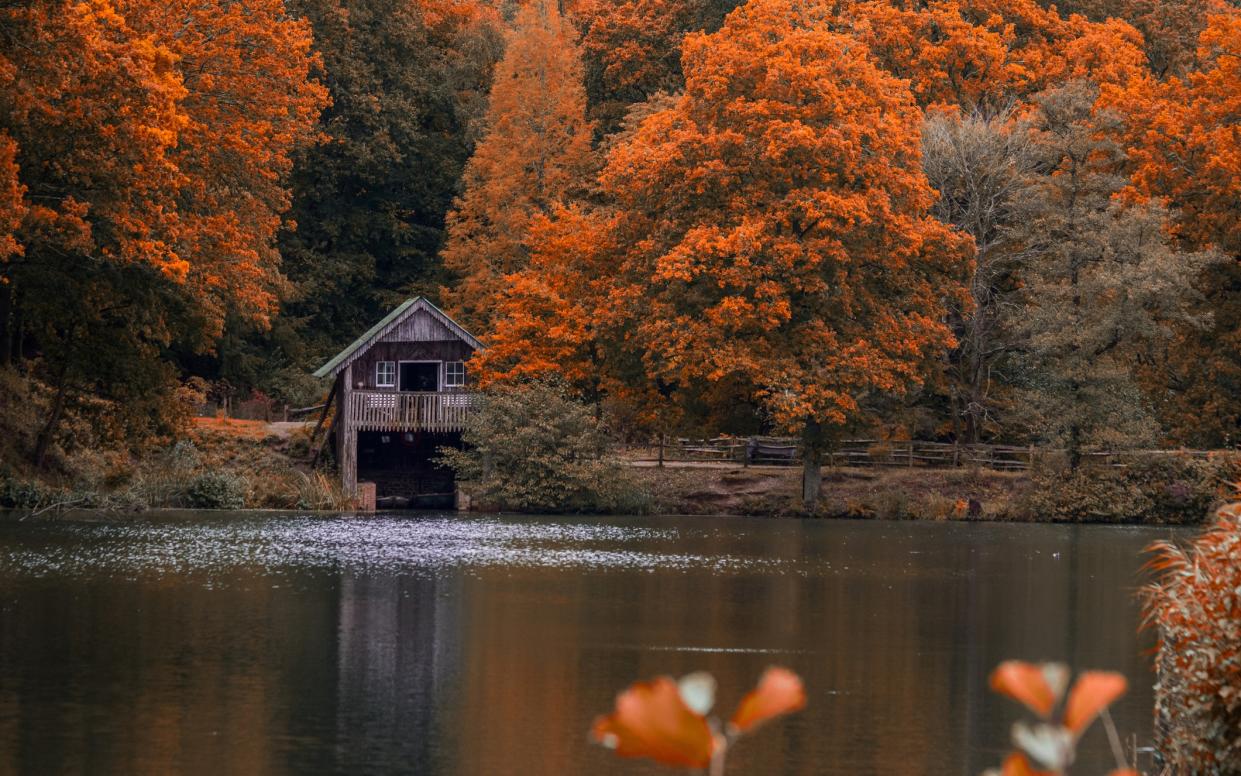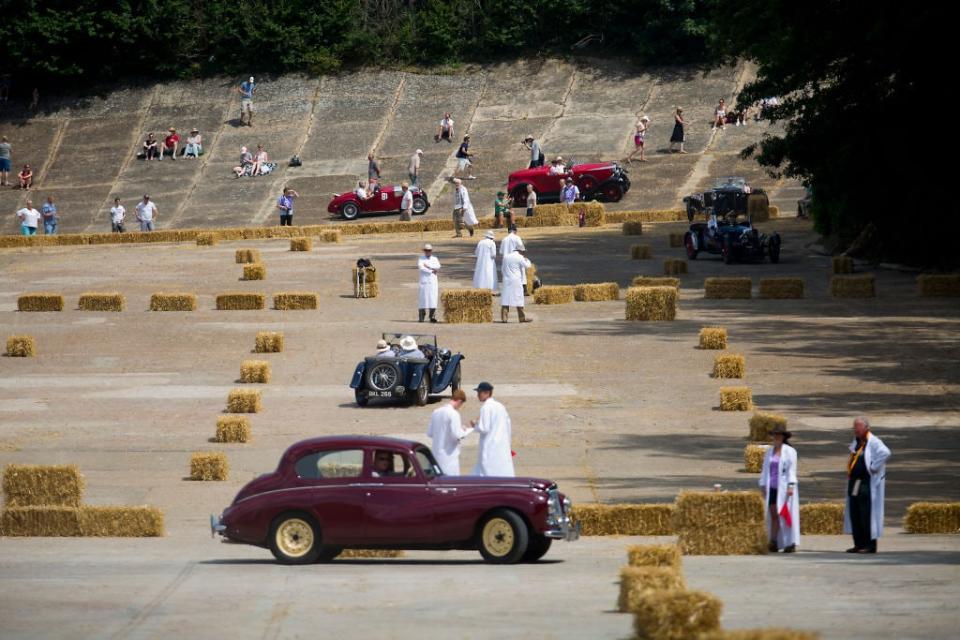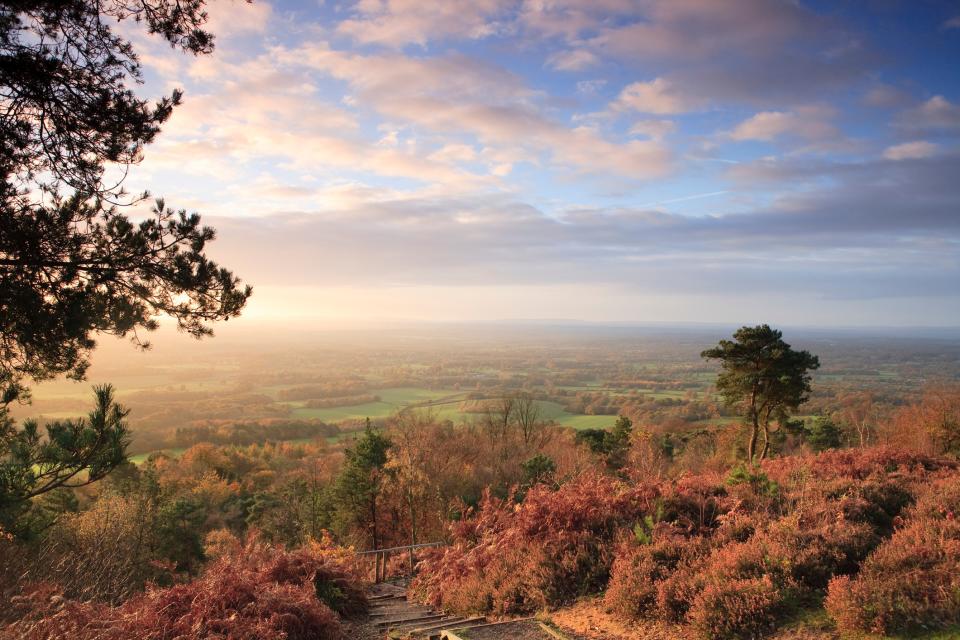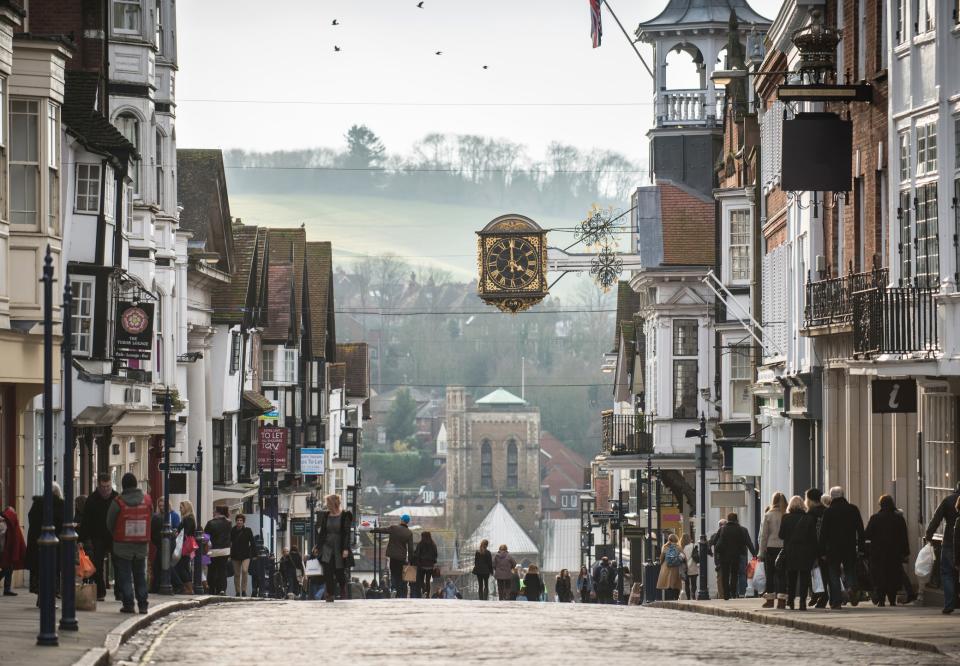The secrets of England's most misunderstood county

What springs to mind when you think of Surrey?
Suburbia? Well, maybe, but what suburbs they are. Kingston-upon-Thames, where seven Saxon kings were crowned, Wimbledon, the home of tennis, Richmond, the Tudor’s favourite palace, where Henry VII and Elizabeth I both died and where Good Queen Bess installed the world’s first flush lavatory. Epsom, home to the world’s richest horse race, the original Derby, Kew, the most famous gardens in the world, or even Surbiton, where we all enjoyed the Good Life in the 1970s. Penelope Keith, who played Margot, the stereotypical Surrey wife, in the much-loved BBC sitcom, actually ended up as the High Sheriff of Surrey in 2002.
Gin and Jag? Well, certainly, plenty of record-breaking Jaguars did race along the famous banking at Brooklands, the world’s first motor racing circuit, at Weybridge in Surrey. And as for gin, it doesn’t come smoother than Surrey’s Silent Pool gin, handcrafted beside the mysterious Silent Pool where bad Prince John surprised a young girl swimming naked. She drowned as she tried to escape his attentions and her cries are sometimes still heard at night. Agatha Christie abandoned her car in the Silent Pool’s car park when she disappeared in December 1926.
As well as gin, Surrey is wine country, boasting England’s largest vineyard, Denbies, just outside Dorking and, back at the Silent Pool, England’s smallest vineyard, the Albury Vineyard, whose Silent Pool rose was served aboard the Royal Barge during the Diamond Jubilee River Pageant.

‘Leafy’? It cannot be denied. Surrey has more trees per acre than any other county in England, creating glorious woodlands carpeted with bluebells in spring and ablaze with red and gold in autumn.
And amongst those trees are some remarkable specimens. At Painshill Park in Cobham you can find the largest Cedar of Lebanon in Europe, 120 feet high and 100 feet wide. Barnes is home to Britain’s biggest plane tree, Crowhurst to Britain’s most ancient tree, a yew thought to be 4,000 years old, and Esher Place to Britain’s oldest tulip tree, imported from Virginia and planted in 1685.

Indeed, the natural diversity and abundance of the Surrey countryside, much of it designated an Area of Outstanding Natural Beauty, persuaded the Royal Horticultural Society to create their flagship garden at Wisley in 1903, while the pioneering garden designer Gertrude Jekyll, from whom family friend Robert Louis Stevenson took the name for Dr Jekyll of Jekyll and Hyde, lived and worked predominantly in Surrey.
Surrey is also famed for its hills. Leith Hill, at 965 feet above sea level the highest point in South East England, is transformed into a mountain by the 64-foot tower built at the summit by Richard Hull – the view from the top reputedly takes in 13 counties. Hull lived at Leith Hill Place, a Palladian house set on the slopes of the hill, which later became the home of the Wedgwood family and the composer Ralph Vaughan Williams, whose mother was a Wedgwood. He grew up there and later handed the house to the National Trust and on occasions they put on concerts of his work in the drawing room.

A couple of miles to the west, on the slopes of Pitch Hill, another of Surrey’s prominent peaks, is the garden where Beatle George Harrison wrote ‘Hear Comes the Sun’ to celebrate the arrival of spring in April 1969.
Box Hill, setting for the picnic scene in Jane Austen’s Emma, has long been Surrey’s most famous natural landmark. Jane Austen was drawn to the area by her admiration for the writer Fanny Burney, who in 1797 built herself a cottage in Westhumble, beneath Box Hill, which she named ‘Camilla’ after her most successful novel. The Victorian author George Meredith lived in Flint Cottage on Box Hill for over 40 years and wrote his best known novel ‘Diana of the Crossways’ in the summer house he had built at the top of the garden. His 1881 poem ‘The Lark Ascending’ inspired his friend Ralph Vaughan Williams to write his own musical version of The Lark Ascending, recently voted Britain’s favourite piece of music. Not much appreciated today, Meredith was, in fact, ahead of his time as the first person ever to use the word ‘tweet’ as a verb.
Box Hill overlooks the old market town of Dorking, birthplace of Laurence Olivier, in 1907, and home to the only house of a Mayflower Pilgrim Father that survives intact in Britain. Shoemaker William Mullins lived in the house in West Street from 1612 until 1620 when he left for the New World aboard the Mayflower with his wife and daughter Priscilla, who later married the Mayflower’s cooper John Alden. Amongst their descendants are Presidents John and John Quincy Adams, Dick Van Dyke, Orson Welles and Marilyn Monroe.

Guildford, Surrey’s historic county town, has ‘the most beautiful high street in England’ according to Charles Dickens. Beneath the cobblestones half way down lies a decorated chamber dating from 1180 and believed to be the oldest synagogue in Western Europe, while at the top a plaque on the wall of the 16th-century Royal Grammar School mentions the boys playing ‘crekett’ at the school in 1550 – the earliest known reference to cricket.
At the bottom of the high street is the church of St Nicolas where P. G. Wodehouse was christened in 1881, having been born prematurely at his aunt’s house at the top of the high street. Overlooking the church from the other side is the Mount Cemetery where Lewis Carroll lies – he wrote Through the Looking Glass while staying in Guildford at the Chestnuts, the house beside the castle he had bought for his sisters, and where he died in 1898.
And then there are Surrey’s hidden gems. Waverley Abbey, beside the River Wey near Farnham, founded in 1128, was England’s first Cistercian abbey. Inspired by the beauty of the ruins Sir Walter Scott took the name for his Waverley novels, which in turn gave their name to Edinburgh’s Waverley Station.

In the church of St Peter and St Paul in Chaldon, on the downs near Caterham, virtually the entire west wall is covered by Britain’s oldest and most complete Doom, an illustration of Judgement Day, showing souls being carried up to Heaven or sent down to Hell. Painted in blood red it dates from the early 12th century, is 17 feet by 11 feet in size, and contains the only image of the Ladder of Salvation found in England.
In the church of St Nicholas in Compton you can find some of the oldest stained glass in Britain, a tiny east window showing the Virgin and Child, and the oldest piece of decorative woodwork in Britain, a wooden balustrade fashioned by Norman carpenters in 1180 that guards the upper sanctuary of the only double sanctuary in England.
Compton can also boast the Watt’s Gallery and the Watt’s Chapel, a remarkable Art Nouveau Romanesque Revival building with terracotta relief carvings designed by Mary Watts In memory of her husband the artist G. F. Watts. It was built by the villagers and is described by Lucinda Lambton as ‘one of the most beautiful, extraordinary, original, marvellous and magical buildings in the whole of the British Isles.’

Buried in the old Saxon church in Albury is William Oughtred, tutor to Christopher Wren and rector of Albury for more than 50 years. A noted mathematician, he invented the slide rule and the multiplication sign ‘x’ and died of ecstasy at the Restoration of Charles II in 1660. In startling contrast to the bare Saxon simplicity of the main church is the sumptuous mortuary chapel of the banker Henry Drummond in the south transept, the walls and ceiling a lavish riot of red and blue and green decoration, the floor laid with gaily painted tiles, the windows filled with colourful stained glass. It is a rare and wondrous work of Augustus Pugin, architect of the Houses of Parliament, who also designed Drummond’s home, Albury Park, next door.
The gardens of Albury Park were laid out in the 1660s by England’s first gardener, the diarist John Evelyn, whose family lived nearby in Wotton House, now a hotel, where Evelyn laid out Britain’s first Italianate garden. A renowned herbalist, John Evelyn gave his name in part to the soap and perfume retailer Crabtree & Evelyn.
And Surrey is, of course, the birthplace of freedom and the Rule of Law, for Magna Carta, the foundation stone of liberty and individual rights in the English-speaking world, was signed at Runnymede by the Thames in 1215.
Not bad for suburbia.


